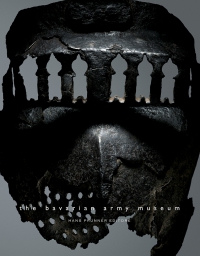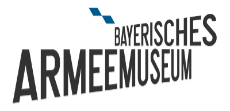 New Publication
New Publication
The Bavarian Army Museum
A Selection of Medieval, Renaissance and Baroque Arms and Armour
Photos: Carlo Paggiarino
Foreword: Ansgar Reiß
Introduction and captions: Tobias Schönauer
Language: English
272pp, 190 photos, hardback with dust jacket
Limited to 500 copies
Price: 145,00 € (in the shop of the museum)
The book
With his extraordinary and impressive eye for detail and composition, Carlo Paggiarino has a rare feel for “the objects” and sees them as masterpieces of outstanding craftsmanship and beauty. He plays with light and shade to bring the artefacts alive rendering them so vividly that they seem to jump out of the page, as if they are in 3D. His photos might seem unusual at first, but they capture what is special about each item in an extraordinary manner.
This publication is a art book in every sense of the word. Not a standard series of photographs but a set of portraits capturing the uniqueness of each and every item. There is not one image that fails to do full justice to the craftsmanship being routinely wrought in steel, gold, leather and fabrics across the spectrum. Shiny surfaces, corroded metals, wrinkled hides, decayed woods, worn out fabrics … all transfigured and transcending.
When the communication achieves an equivalent originality and power of its own, the result is a publication of unique and genuine charisma.
From the foreword of the director of the museum:
This is the first time that a catalogue has been published covering the older artefacts in the Bavarian Army Museum. Its publication coincides with our plans to reorganise and permanently display this historically important collection. The older items played a crucial role even at the inception of the museum in 1879, as Tobias Schönauer sets out in his contribution with the story of the sixteenth-century cannons. When the Bavarian National Museum requested them for its collection, the Bavarian Army preferred to establish its own museum, thereby retaining sovereignty over these valuable items. It was unwilling to let these symbols of glory and power pass out of its hands. The ancient cannons have names and bear inscriptions, which allows them to be identified accurately and with ease. This is unfortunately not the case with many of the other items in the museum’s collection. Although we can often assume, for example, that a weapon comes from a Bavarian armoury, or belonged to a nobleman or even one of the dukes of Bavaria, we cannot prove it with documentation. Because the other major reason for founding the museum was to collect from various armouries venerable items that no longer served any function and were no longer relevant, but that no one wanted to simply destroy. But those items had no name or inscriptions, and since no one took care to provide any kind of “routing slip” before sending them on their way, their history can no longer be identified today. Consequently, their provenance is uncertain, and the exact origin of the items frequently played only a minor role in past organisation of the museum's collections. The objective was rather to have a complete arsenal of functional and aesthetic types. Although the items were then displayed in an historical narrative, the foremost intention was to show an array of different forms, not their historical context or relevance. The objective in founding the museum – to provide a forum in honour of the army and the Bavarian princes – was ultimately undermined during the museum’s first decades by this ultimately aesthetic goal. In hopes of diversifying the museum’s holdings, purchases were made and items exchanged with other museums or collections. This practice gradually slowed, and finally came to a halt in the period just after World War II.
This structure of the collection is reflected in this volume...
From the introduction of the curator:
... For decades, the collection of mediaeval and early modern arms in the Bavarian Army Museum was far from being the main focus of the museum. Many items are completely unknown outside the museum; others only rarely appear in exhibition catalogues, and rather by chance. And so it was real stroke of luck when Carlo Paggiarino contacted me and suggested this project. Although there are plans for a catalogue of the older collection once the new permanent exhibition of the museum has been renewed, they have been delayed owing to construction work, and so this was a more than welcome opportunity to take a closer, very artistic look at the collection.
Carlo Paggiarino has a rare feel for these objects. He sees these items for what they were at the time they were made: objects of outstanding craftsmanship. He has an extraordinary and impressive eye for detail, sections of images, and composition. His play with light and shade especially seem at times to bring the artefacts alive. The surfaces are rendered so vividly they seem to step out of the book towards the observer, as if in 3D. The detail photos might seem unusual at first, but they capture what is special about each item in an extraordinary manner. Carlo records each artefact in highly individual fashion. He does not photograph every pavise in the same way, but finds the detail that makes that item extraordinary. Each artefact is placed or illuminated differently; this is no serial shoot, but a set of individual photos that capture the uniqueness of each and every item.
Photographing these kinds of reflective or corroded surfaces in the right light is an art that demands a huge amount of work. Simply setting up the right lighting, getting shadows to fall correctly and mounting the artefacts is very time-consuming. It also demands careful and precise handling of these extremely valuable, rare items. Carlo showed great specialist knowledge in his judgement of the artefacts to be included in this volume, as well as the necessary sensitivity when handling the centuries-old exhibits. It was a thrilling experience and the discussions about which artefacts should be included were truly enriching. The shots of the cannon on pp. 180-183 alone demanded one day of preparation. The photos themselves were taken at night to prevent interference from daylight. Besides Carlo and myself, Gary Shepard was of crucial, professional help and, for the most of the time that Carlo worked at the museum, a dependable assistant and interlocutor....
Lastly, I would like to thank Carlo Paggiarino and the museum director, Dr. Ansgar Reiss, for granting us the liberty to publish the ‘Old Collection’ of the Bavarian Army Museum, as it is called, in several parts to start with, of which this volume is one. And to do so in an extraordinary and timeless way – as befits these unique items.


